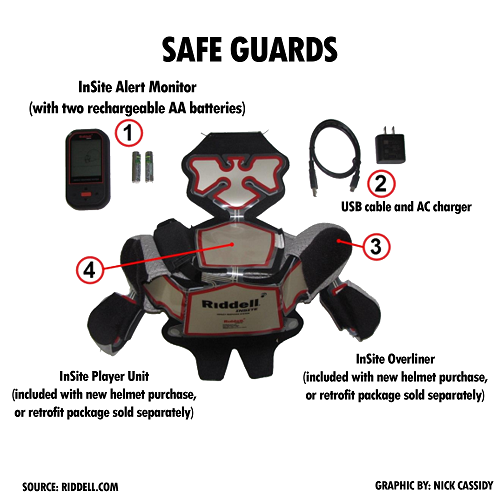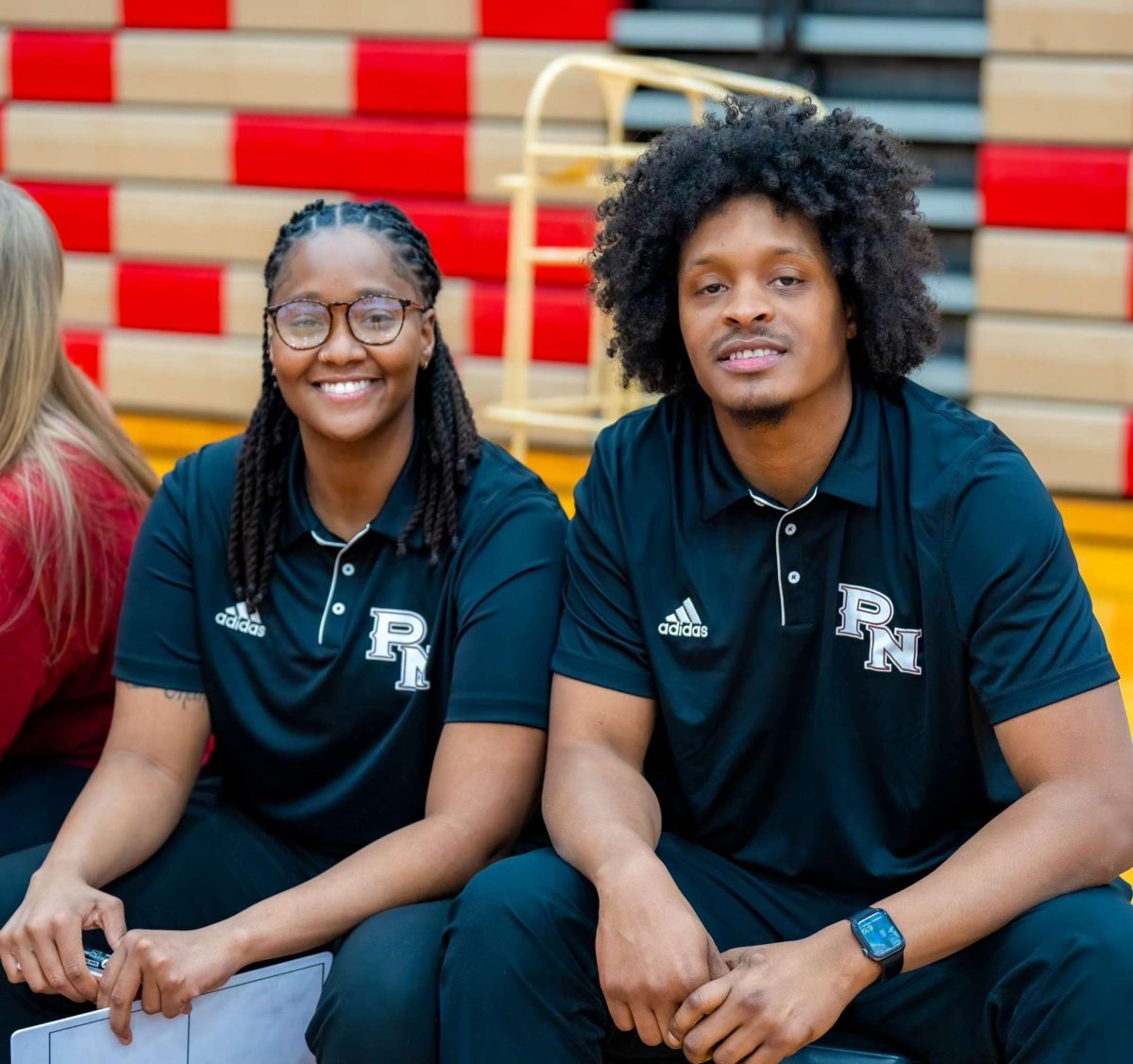Recent deaths trigger injury awareness
Officials focus on concussion in schools

November 19, 2015
High school football is a way of life for many athletes in America; however, recent fatalities prove it can also end an athlete’s life.
Recently a senior from Bogan High School in Chicago, Andre Smith, was pronounced dead after taking a hard hit to the head in a football game.
Smith was tackled and appeared fine, but later in the game Smith started to complain about having a headache. Moments later Smith collapsed and was unconscious. He never regained consciousness and was ruled dead Friday night at a hospital.
Smith’s death was only one amongst eight others around the nation this fall. Smith joins the ranks with Cam’ron Matthews from Texas, Rod Williams from Georgia, Kenny Bui from Washington, Evan Murray from New Jersey, Ben Hamm from Oklahoma, Luke Schemm from Kansas, and Tyrell Cameron from Louisiana. Nine-year-old Wyatt Barber from Ohio also died from having a heart attack due to an inflamed heart, collapsing in a practice, Barber was resuscitated until police arrived. It was not until the next morning Barber was pronounced dead.
Sporting officials at all levels are trying to come up with a solution that could prevent these tragedies from happening. Schools are trying to get parents involved by either forcing their children to wear more protective gear or to quit playing the sport altogether.
Companies such as Riddell and Reebok have invented technology in football helmets that have sensors in them that fit inside the helmet and trigger a warning when a player sustains an especially hard blow to the head, however. Riddell’s newest helmet, the SpeedFlex, is the first ever designed to include a polymer-film lining that develops a charge when impact pressure is applied, and reduces the force of collisions using a flexible panel that compresses upon impact. Riddell stated that youth leagues use their technology in their helmets on a daily basis, however, not all schools can afford the latest equipment.
Launched last year, Riddell’s InSite system has sensors that send wireless alerts to handheld devices on the sidelines, telling the coaches when a player has sustained an unusual forceful hit or series of hits to the head. The cost of the InSite is 150 dollars per Player Unit and 200 dollars for the Alert Monitor, allocating the number of injuries to the head. Athletes at Plainfield North have first-hand experience with concussions
“During your first few weeks and months of having a concussion, you’re limited to participating and receiving any type of risk of getting hit,” said senior volleyball player Kyle Piekarski. “If you receive several hits, you can get post concussive syndrome, which could last several months.”
In the past two decades, there have been a total of 282 recorded deaths of high school athletes. Annually the average is about 14.1 deaths per year. Schools around the nation are slowly realizing the growing problem and are trying to fix the issue.
“A lot of them [players] seem to deal with head injuries. We already have changed a lot of things we do so far like tackling. In terms of the amount of contact each player makes with another is trying to be reduced with different techniques,” said head football coach Tim Kane.
Athletes show symptoms of head exhaustion. Some even die from head traumas and spinal cord separations killing the players almost instantly. As athlete deaths rise, safety for these young adults still remains unchanged.
“It pushes players who have had concussions to be more cautious,” said senior varsity soccer player Reyse Stirrett. “Athletes who suffer from concussion(s) have to focus more and tend to lose confidence in their performances. Sometimes I’ll feel like I am not going 100% because of how much effect the concussion has on me.”
Around the Plainfield community, coaches realize that deaths from sports are becoming more common and the gear that they are given to distribute to the players are not as protective as they could be.
“[I think] the sporting bodies themselves are trying to be proactive and make sure more players are safe,” said Kane. “With all the research out there, they’re finding new ways to keep our players more safe and for any youth player who just wants to get out there and play with their buddies. We just want them to have a safe experience.”
Athletic director Ron Lear is aware of the issue and is looking for possible answers to resolve it.
“We take a lot of pride in making sure our equipment is safe, such as helmet checks and refinancing equipment. They do an outstanding job teaching the proper techniques such as how to tackle and not get hurt. Our coaches spend a lot of time teaching what is right before doing it so we can get it through our player’s heads because unfortunately, injuries are occurring often across the country,” said Lear.
This is not just a concern for coaches and players at a high school level, but at every level, because participating in sports is a luxury, and nobody plans on dying playing a sport. With winter sport season approaching, practices offer danger zones for concussions.
Senior Kevin Krieger was diagnosed with a concussion earlier this year and was just recently released after a two week resting period after injuring his head in a head-on car accident.
“With me only getting cleared a little bit ago, I hope it doesn’t affect my performance in any way because of hearing about all these athletes who are dying from getting concussions. It is a really scary as a topic to hear about. My main concern is to try to avoid making contact to my head, so I don’t suffer from anymore head trauma,” said three year varsity basketball player Krieger.
North is working with the Illinois High School Association (IHSA) to implement more safety in high school sports, making any injuries as minimal as possible.
“The IHSA is doing a lot of things right now,” said Lear. “They are changing rules and other things to make sports safer especially in football. They’ve made changes along the lines of how much teams can hit and scrimmage. They’ve been doing everything they can to take care and keep our student athletes safe because they care just as much as we do.”
Recently, researchers have found a new study to test people that have had head traumas. The test is a simple blood test that Dr. Linda Papa created and was able to get a 94% accuracy rate according to CBSnews.com.
The test is proven more reliable than a regular CT scan. She had researchers look at 257 children, 197 of whom had suffered blunt trauma to the head, and compare CT scans in 152 of the kids to their blood test results. Not only were the tests reliable, they identified the severity of the injury by measuring a biomarker released when brain cells are injured. That biomarker, called glial fibrillary acidic protein, exists around the brain’s neurons.
Current tests can only show symptoms like blurred vision, headaches, and vomiting. Yet, these current tests can not show how severe the injury is.
The blood test can see the protein levels in the body and can determine how severe the damage to the body is.
This type of test is only a start for the advances in medicine that could possibly put a stop to these young athletes losing their lives.






